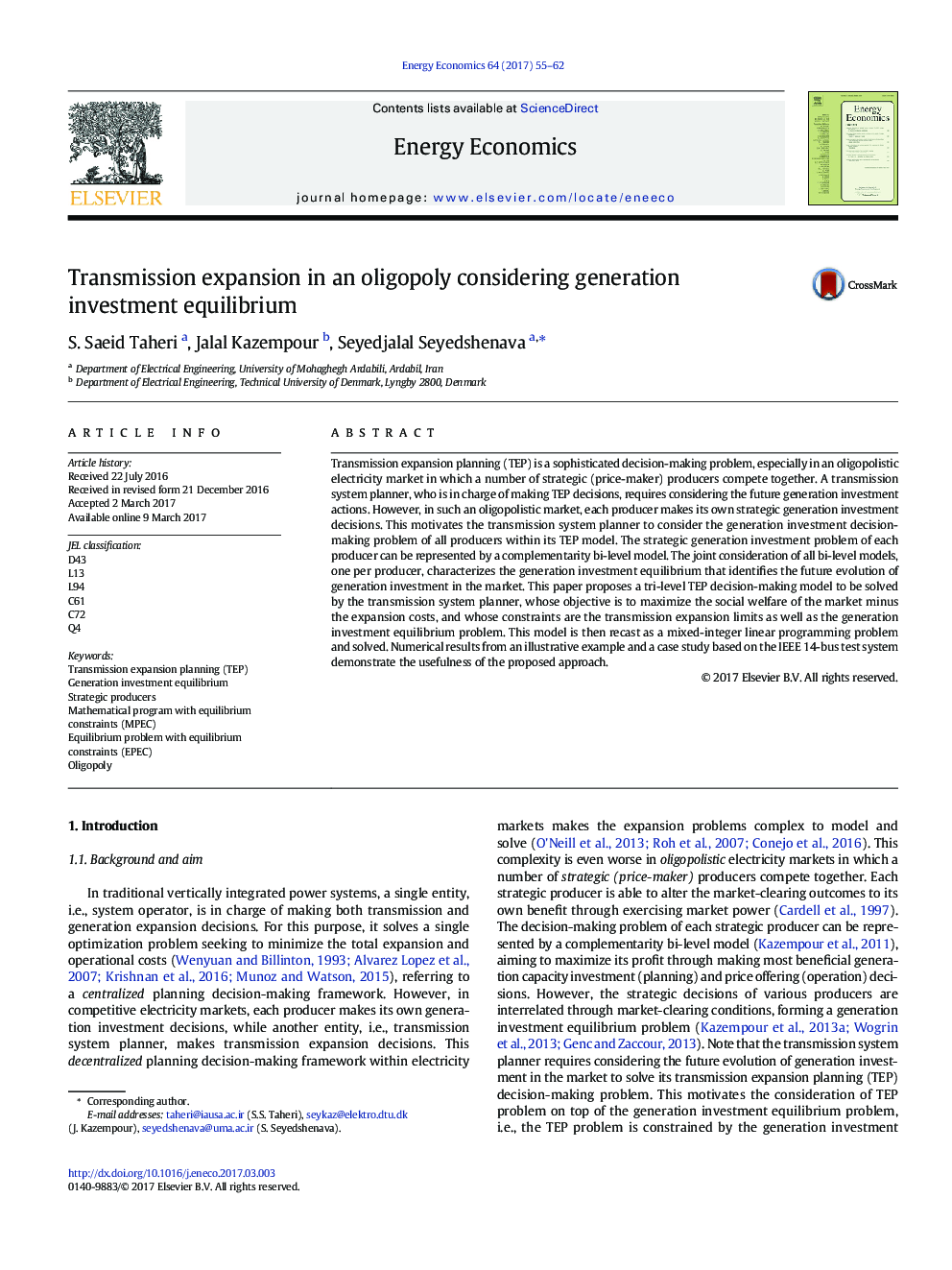| کد مقاله | کد نشریه | سال انتشار | مقاله انگلیسی | نسخه تمام متن |
|---|---|---|---|---|
| 5063667 | 1476700 | 2017 | 8 صفحه PDF | دانلود رایگان |

- A tri-level complementarity decision-making model for transmission expansion planning is proposed.
- The future evolution of generation investment in the market by strategic producers is endogenously obtained.
- The proposed model is finally recast as a mixed-integer linear problem.
- The numerical study demonstrates that the level of market competition among producers may change the transmission expansion results.
Transmission expansion planning (TEP) is a sophisticated decision-making problem, especially in an oligopolistic electricity market in which a number of strategic (price-maker) producers compete together. A transmission system planner, who is in charge of making TEP decisions, requires considering the future generation investment actions. However, in such an oligopolistic market, each producer makes its own strategic generation investment decisions. This motivates the transmission system planner to consider the generation investment decision-making problem of all producers within its TEP model. The strategic generation investment problem of each producer can be represented by a complementarity bi-level model. The joint consideration of all bi-level models, one per producer, characterizes the generation investment equilibrium that identifies the future evolution of generation investment in the market. This paper proposes a tri-level TEP decision-making model to be solved by the transmission system planner, whose objective is to maximize the social welfare of the market minus the expansion costs, and whose constraints are the transmission expansion limits as well as the generation investment equilibrium problem. This model is then recast as a mixed-integer linear programming problem and solved. Numerical results from an illustrative example and a case study based on the IEEE 14-bus test system demonstrate the usefulness of the proposed approach.
Journal: Energy Economics - Volume 64, May 2017, Pages 55-62